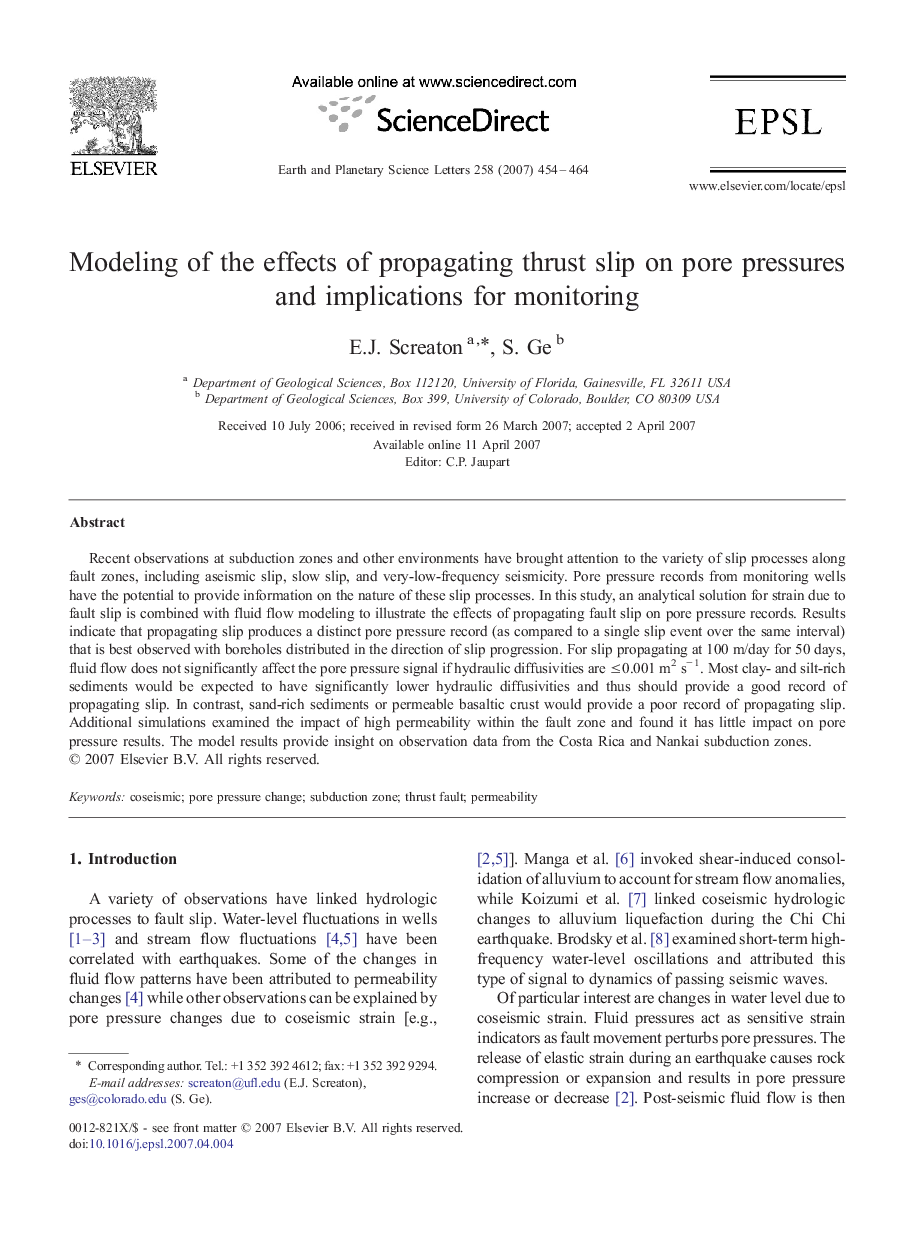| کد مقاله | کد نشریه | سال انتشار | مقاله انگلیسی | نسخه تمام متن |
|---|---|---|---|---|
| 4680344 | 1634918 | 2007 | 11 صفحه PDF | دانلود رایگان |

Recent observations at subduction zones and other environments have brought attention to the variety of slip processes along fault zones, including aseismic slip, slow slip, and very-low-frequency seismicity. Pore pressure records from monitoring wells have the potential to provide information on the nature of these slip processes. In this study, an analytical solution for strain due to fault slip is combined with fluid flow modeling to illustrate the effects of propagating fault slip on pore pressure records. Results indicate that propagating slip produces a distinct pore pressure record (as compared to a single slip event over the same interval) that is best observed with boreholes distributed in the direction of slip progression. For slip propagating at 100 m/day for 50 days, fluid flow does not significantly affect the pore pressure signal if hydraulic diffusivities are ≤ 0.001 m2 s− 1. Most clay- and silt-rich sediments would be expected to have significantly lower hydraulic diffusivities and thus should provide a good record of propagating slip. In contrast, sand-rich sediments or permeable basaltic crust would provide a poor record of propagating slip. Additional simulations examined the impact of high permeability within the fault zone and found it has little impact on pore pressure results. The model results provide insight on observation data from the Costa Rica and Nankai subduction zones.
Journal: Earth and Planetary Science Letters - Volume 258, Issues 3–4, 30 June 2007, Pages 454–464